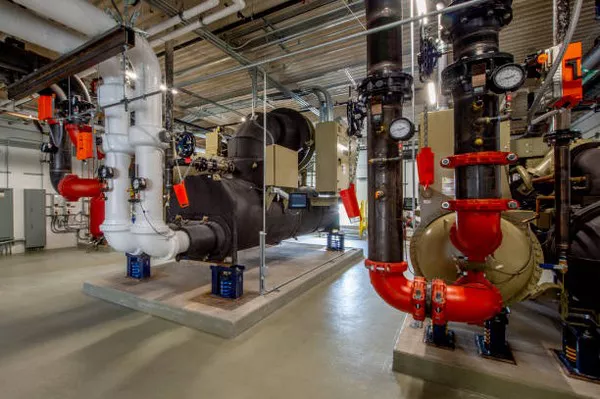Air compressors are versatile tools used in various industries and applications, from powering pneumatic tools to inflating tires. They convert power (using an electric motor, diesel, or gasoline engine) into potential energy stored in compressed air. This guide will explore what air compressors are, their types, and their applications, providing you with a comprehensive understanding of these essential machines.
Introduction to Air Compressors
Air compressors are machines that take in air from the atmosphere, compress it, and store it for later use. They are essential in various applications, including manufacturing, automotive service, construction, and home improvement projects. By compressing air, these machines create a source of power that can be used in numerous ways, making them invaluable tools in both industrial and domestic settings.
How Air Compressors Work
Basic Components of an Air Compressor
An air compressor typically consists of the following components:
Motor: The motor drives the compressor’s pump, providing the power needed to compress air.
Pump: The pump compresses the air and sends it to the storage tank.
Storage Tank: This tank stores the compressed air until it is needed.
Pressure Switch: This component automatically turns the compressor on and off to maintain the desired pressure level.
Regulator: The regulator controls the output pressure of the compressed air.
Air Filter: This filters out impurities from the incoming air.
The Compression Process
The process of compressing air involves drawing in ambient air, reducing its volume, and increasing its pressure. The air compressor’s pump compresses the air, which is then stored in the tank. When the air is released, it expands, creating a powerful source of energy that can be used to drive pneumatic tools, inflate tires, or operate various machinery.
See Also: What Gallon Air Compressor Do I Need? A Detailed Buying Guide
Types of Air Compressors
Air compressors can be classified into two main categories: positive displacement compressors and dynamic compressors. Each type has its own subtypes and specific applications.
Positive Displacement Compressors
Positive displacement compressors work by trapping a specific volume of air and reducing its volume, resulting in increased pressure. The primary subtypes include:
Reciprocating Compressors
Reciprocating compressors use a piston-driven mechanism to compress air. They are available in single-stage and multi-stage configurations.
Single-Stage Compressors: These are suitable for low-pressure applications and are commonly used for small workshops and home garages.
Multi-Stage Compressors: These are designed for high-pressure applications, such as in industrial settings, and can produce higher pressure outputs.
Advantages:
High efficiency for low-volume applications
Relatively simple design
Disadvantages:
Can be noisy
Requires more maintenance
Rotary Screw Compressors
Rotary screw compressors use two interlocking helical screws to compress air. They are often used in industrial settings where continuous operation is required.
Advantages:
Continuous operation
Lower noise levels
Higher efficiency for large-scale applications
Disadvantages:
Higher initial cost
More complex maintenance requirements
Diaphragm Compressors
Diaphragm compressors use a flexible diaphragm to compress air. They are commonly used in applications requiring clean and oil-free air.
Advantages:
Oil-free operation
Minimal maintenance required
Disadvantages:
Limited pressure and flow capacity
Generally more expensive than reciprocating compressors
Dynamic Compressors
Dynamic compressors increase the air’s velocity and convert it into pressure using high-speed rotating blades. The primary types include:
Centrifugal Compressors
Centrifugal compressors use a rotating impeller to increase the velocity of the air, which is then converted into pressure. They are suitable for high-volume applications.
Advantages:
High efficiency for large air volumes
Continuous operation
Disadvantages:
Not suitable for low-pressure applications
More complex and costly to manufacture
Axial Compressors
Axial compressors use a series of rotating and stationary blades to compress air in an axial direction. They are commonly used in jet engines and large industrial applications.
Advantages:
High flow rates
Compact design
Disadvantages:
Complexity in design and maintenance
Not suitable for small-scale applications
Applications of Air Compressors
Air compressors are utilized in various fields, including:
Industrial Applications
Manufacturing: Powering pneumatic tools, conveyors, and assembly lines.
Painting: Supplying air for spray painting and coating applications.
Food and Beverage: Used in bottling plants for filling and packaging.
Automotive Applications
Tire Inflation: Providing the necessary pressure for vehicle tires.
Pneumatic Tools: Operating tools such as impact wrenches and air hammers in repair shops.
Home and DIY Applications
Inflation: Inflating sports equipment, pool toys, and air mattresses.
Cleaning: Using compressed air for blowing dust and debris from equipment.
Choosing the Right Air Compressor
When selecting an air compressor, several factors must be considered to ensure it meets your needs:
Factors to Consider
Application Requirements: Determine what you will use the compressor for and the required pressure and airflow.
Portability: Consider whether you need a stationary or portable compressor.
Power Source: Decide between electric, gasoline, or diesel-powered compressors based on your usage environment.
Budget: Set a budget for your compressor purchase, factoring in both initial costs and ongoing maintenance.
Maintenance Tips
To ensure the longevity and efficiency of your air compressor, follow these maintenance tips:
Regularly Check Oil Levels: For oil-lubricated compressors, maintain proper oil levels.
Inspect Air Filters: Clean or replace air filters regularly to ensure optimal performance.
Drain the Tank: Periodically drain moisture from the tank to prevent rust and corrosion.
Perform Routine Inspections: Check hoses, fittings, and connections for leaks or wear.
Conclusion
Air compressors are essential tools used in various industries and applications, offering a reliable source of compressed air for powering tools, inflating tires, and much more. Understanding the different types of air compressors and their respective applications allows you to choose the right model for your needs, ensuring efficiency and effectiveness in your projects.
You Might Be Interested In

